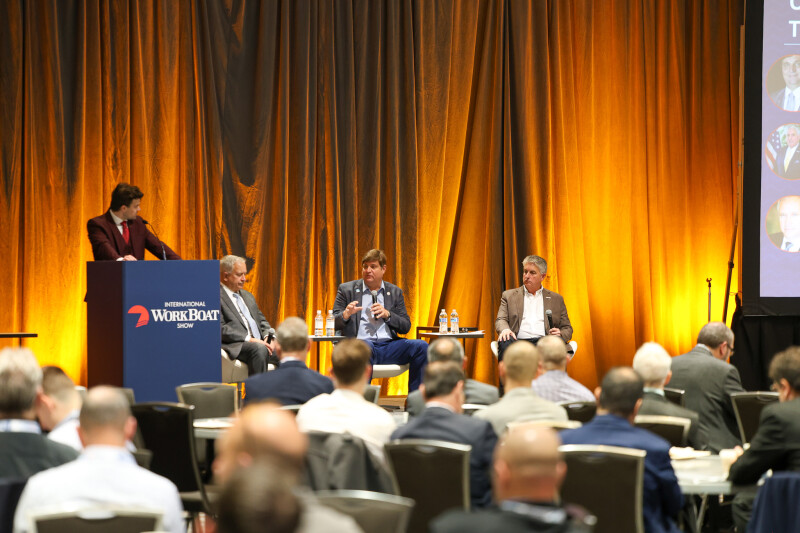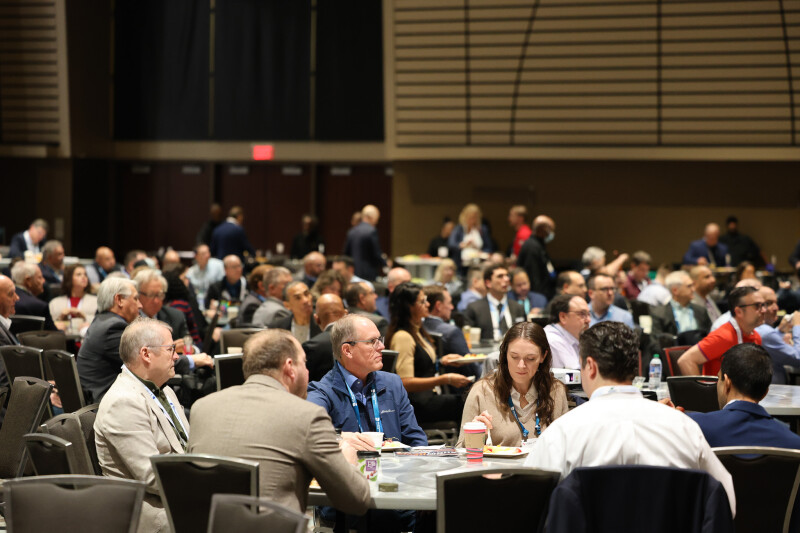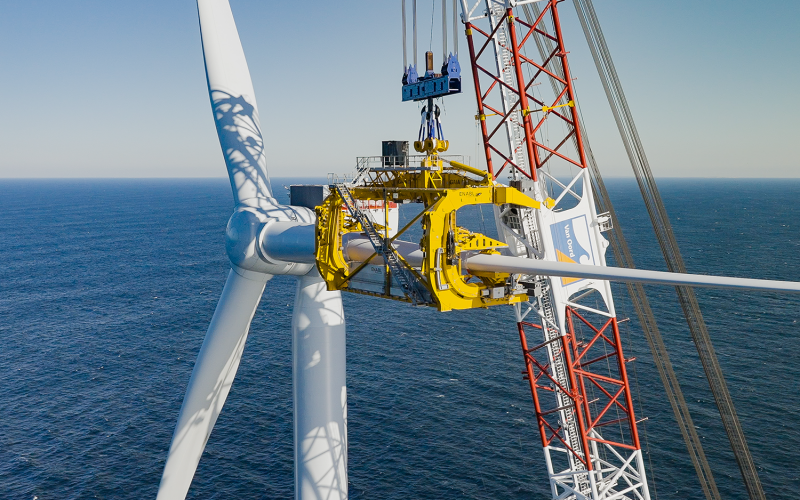Financial setbacks for offshore wind developers may force retrenchment for some U.S. East Coast projects. But the industry still has a promising future there and in the Gulf of Mexico, where the market for wind power will lie with the region’s heavy industry, according to offshore operators.
Wind company Ørsted’s sudden retreat from its Ocean Wind projects off New Jersey is the clearest sign of industry distress amid mounting costs, with attempts by Ørsted and others to get new power purchase agreements and tax credits.
But the Ocean Wind project could be revived in a still-viable U.S. industry with a 25- to 30-year buildout, suggested Carl Annessa, executive vice president of Hornbeck Offshore Services Inc.
“We’ll just have to endure that long cycle,” just as in the Gulf offshore oil and gas industry, Annessa said during a panel discussion Thursday at the International WorkBoat Show in New Orleans.
Titled “Energizing Potential Through Addition, not Transition,” the session focused on how wind power development will fit in with the Gulf’s legacy industry at Port Fourchon, La., and other hydrocarbon hubs.
Davie Breaux, deputy port director for the Greater Lafourche Port Commission, said the port is well equipped to serve offshore wind in addition to existing fleets.
“I expect the solution for offshore wind in the Gulf of Mexico will have to be something other than municipal power” as is planned for energy aimed at East Coast population centers, said Annessa.

There will be demand from the Gulf region’s energy-hungry industries and a developing market for hydrogen, said Annessa and Joseph Orgeron, a Louisiana state legislator whose offshore experience with oil and gas helped build the Block Island Wind Farm, a 30-megawatt pilot project in state waters off Rhode Island in 2016. His startup 2nd Wind Marine has designed a “superfeeder” barge to supply offshore wind companies with a Jones Act-compliant installation solution.
Orgeron sees the Ørsted pullback as part of a “respiratory break” after the prolonged breakneck effort by developers, Northeast state governments and the Biden administration to press forward on development.
In the Gulf of Mexico, some Texas state officials have been less than enthusiastic about offshore wind. That has given developers some pause and probably contributed to the lackluster response to the Bureau of Offshore Energy Management’s first lease offerings, said Orgeron.
Onshore renewable energy developers also face political challenges in Texas, part of perennial battles over energy market share. But talk of a “energy transition” obscures the potential additional uses for existing energy infrastructure for both hydrocarbons and wind, said Orgeron.

Gulf offshore operators are now at work off the East Coast on the Vineyard Wind and South Fork Wind projects, using the so-called feeder barge model that uses Jones Act-compliant U.S. barges and tugs to bring turbine components to the work sites. Initially viewed by skepticism by Jones Act critics, the system is working. Annessa said there’s also a warming among European-based wind companies toward using more converted offshore service vessels (OSV) instead of their longstanding preferences for newbuild vessels.
Initially, “the mentality was ‘we want the newest and we want the best,’” in an industry that was used to working with advanced vessels at relatively low charter rates in Europe, said Annessa. Faced with costs in the U.S., “the wind industry was not prepared for that, frankly.”
By doing OSV conversions, “we felt we could meet 90% of those requirements,” he said.
“I attribute that just to good old American ingenuity,” he added. “That’s been the history of the Gulf of Mexico, and it’s being brought to bear in the Northeast.”
Immediate challenges to wind development include committing to port facilities, the panelists said. “It’s going to be an all-of-the-above,” said Breaux. “What do we do when things slow down? We continue building the port.”

Annessa sees the need for “consistent national energy policy … it’s been whipped around every four years.” He said investment “is perilous because you never know what’s going to happen in Washington.”
Moreover, developing wind or any newer energy source is going to need “hard money, not tax credits. You need to put money into it,” said Annessa. That includes regional electrical grids, he added: “You can’t put cables into these little burgs on Long Island and pump through 5 gigawatts of power into the grid.”
Asked what 2024 will bring, Orgeron and Annessa agreed the industry pace will likely slow down for the year.
“I think the industry at least from the perspective of the U.S., is going to take a year off,” said Annessa. “Take a powder.”




